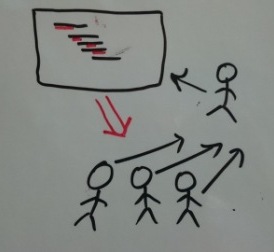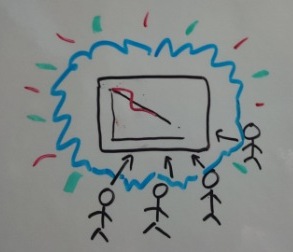During a workshop on Agile Scrum, for participants new to Agile, a question came up – how is tracking in Agile different than in traditional project management? A very interesting question, which cannot be answered in short – covering some aspects, more to elicit interest in those new to Agile Scrum. 
- in a team meeting,
- one on one meet with the PM,
- update the information in a in-house or
- a deployed tool.
This is in most cases is a measure of progress, in terms of work that is accomplished, it is subjective and as perceived by the individual. This often is done once in a week or two weeks. Next, the PM looks at these inputs and interprets where the project is headed. This information is then shared back with the team. Often, there is a time gap between the team reporting and receiving the interpreted or worked out status. If the progress is not as expected, the message is likely to be received with some degree of irritation/annoyance – a natural human reaction to unfavorable tidings. The PM has to get the team to make renewed commitment to meet the goals. In Agile the progress is shared in daily stand ups, remaining work updated on the burn-down chart, the task (often a sticky) moved on a task board to the appropriate slot. The information is there for all to see, if the progress is not as expected the message is “there” and is not delivered by anyone in particular. That makes a big difference. 
Tracking is a combination of sensing (the status) and it’s communication. Daily stand ups in Agile Scrum, help in sensing by making it frequent and transparent. Sensing frequently eliminates errors and improves accuracy. The communication in Agile/Scrum is interactive and the use of task boards and the like, help radiate the information – it’s there for all, in a pervasive way.
